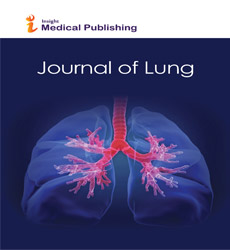Strategy for obtaining anti-cancer liposomes
Abstract
In this topic we will discuss the use of new antibiotics and new suggestions from these in term on patient’s outcomes in hospital-acquired pneumonia (HAP). HAP is simply a pneumonia that occurs 48 hours or greater after hospital admission and the symptoms of pneumonia are not present at the time of admission or within those first 48 hours of hospital admission. The next most common category is ventilator-associated pneumonia or VAP and this is pneumonia arises 48 hours after implementation of mechanical ventilation. There is also a category of ventilated HAP or VHAP, which is a pneumonia that occurs 48 hours after admission. Again, the patient does not have symptoms of pneumonia within those first 48 hours and is not associated with mechanical ventilation. However, this type of pneumonia is fulminant and after patients develop symptoms, they often require emergent intubation and mechanical ventilation. Hospital-acquired bacterial pneumonia (HABP) is one of most common nosocomial infections in critically ill patients and is a major cause of mortality. Up to about 25%of all ICU infections and more than half of antibiotics prescribed in critical care units, are associated with pneumonia. Mortality rates are actually quite high as well, ranging from about 20% to 50%.Often the most fulminant serious type of pneumonia in the ICU is this ventilated HABP, followed by ventilator –associated bacterial pneumonia, and finally our lowest mortality rates in non-ventilated hospital HABP. A major risk factor for pneumonia in the ICU is mechanical ventilation; about 10% in patients who are intubated may develop ventilator-associated bacterial pneumonia. Ventilator-associated bacterial pneumonia is associated with significant bad outcomes in not only increased mortality, but also increased duration of ICU stay and overall hospital stay .Late onset pneumonia, particularly in the ICU, is associated with an increased risk for multidrug –resistant organisms. The top pathogens implicated in hospital-acquired pneumonia are represented generally by Staphylococcus aureus, especially MRSA, but also by gram-negatives: Pseudomonas, Acinotebacter, Eschericia coli, and Klebsiella, particularly ESBL-producing and extensively drug-resistent Enterobacteriaceae. The incidence of hospital-acquired pneumonia caused by multi-drug-resistant pathogens id increasing worldwide. So, we are in front of problem-related to ESBL Enterobacterales and very important problems sustained by carbapenem-resistant Pseudomonas,Acinotebacte,Enerobacterales as causative agents of HABP and VABP. probably enough for managing these dfficult-to-treat infections.
Open Access Journals
- Aquaculture & Veterinary Science
- Chemistry & Chemical Sciences
- Clinical Sciences
- Engineering
- General Science
- Genetics & Molecular Biology
- Health Care & Nursing
- Immunology & Microbiology
- Materials Science
- Mathematics & Physics
- Medical Sciences
- Neurology & Psychiatry
- Oncology & Cancer Science
- Pharmaceutical Sciences
